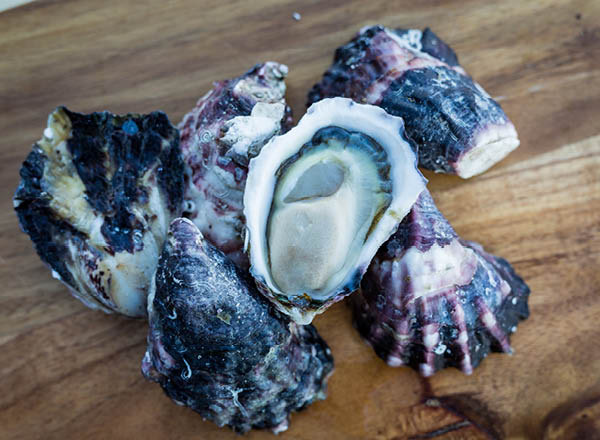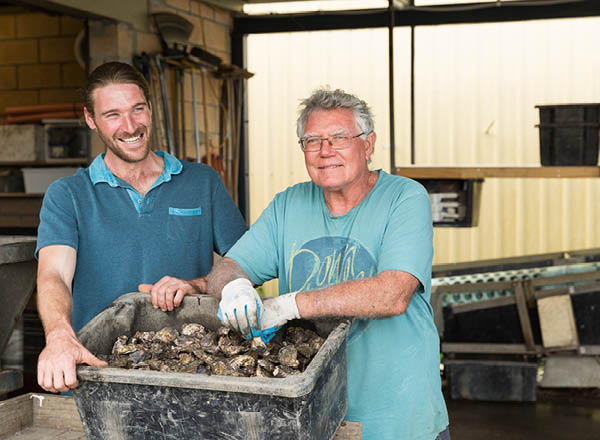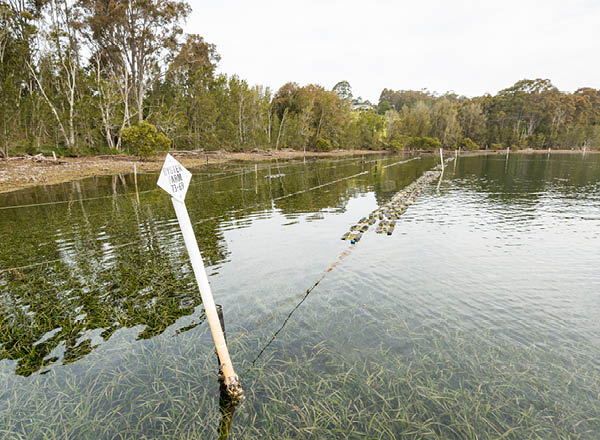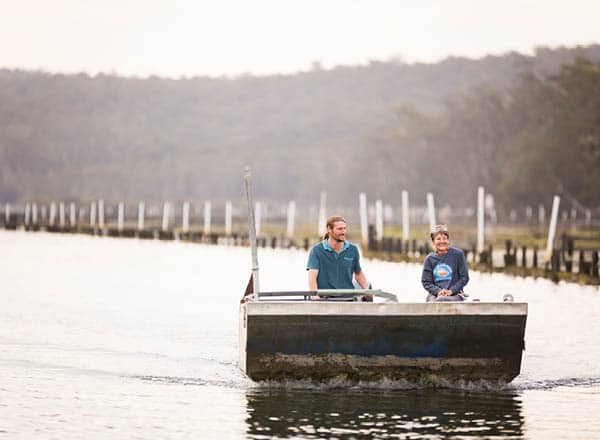When David Maidment stumbled onto the idea of oyster farming in Narooma back in 1979, his first thought was, “Mightn’t be a bad life.” Fast forward forty years and time has proven he was correct. It’s also given the experienced oyster farmer, and board member of the Narooma Oyster Festival, the chance be part of an industry that has changed enormously since the days when David and his wife began farming oysters on Narooma’s Wagonga Inlet.
breeding oysters
“Pacific oysters hadn’t yet been farmed, although they had been introduced by CSIRO. The breeding of oysters wasn’t developed anywhere in the world,” he says.

At that time rock oysters, now a speciality of the Eurobodalla Region and other parts of Australia’s East Coast, were only caught in the wild. It made for a lucrative market and businesses boomed, at least until pollution problems in Sydney’s Georges River had a spin-off effect.
“The oyster industry dipped and people wondered if the Sydney Rock Oyster industry would go into oblivion. It was a traumatic time,” says David.
But as breeding techniques developed, farmers like David were at the forefront of working out how to farm the fussy rock oyster.
“On a scale of zero to ten, breeding Pacific Oysters is a four or a five. The rock oyster? It’s an eight or nine. They are very small so the handling techniques and biology of the animal are challenging. It only absorbs fine types of algae. It took quite a lot of time [for the industry] to figure out that you couldn’t just feed them the same as Pacific Oysters,” he says.

The work of an oyster farmer has changed radically in the last 15 years.
“It’s now less labour intensive, and you’re producing a better product that the market really appreciates. We understand the biology and the food that oysters need far better than when I started, and know why their flavours vary from river to river and place to place,” David says.
What’s also well understood today is the connection between an oyster and its surrounding environment. There’s a reason today’s oyster farmers are known as the “Guardians of the Sea.”: they know firsthand what runoff and pollution does to this live product that can absorb live organisms and bacteria in the water.
“We know what is in the waterways because to sell oysters we have to sell a healthy product. When salinity drops below a certain threshold the oysters become stressed, and when rain runs off the land all sorts of contaminants come in so we stop harvesting.

“We didn’t know all of that 15 years ago, but today, we do a massive amount of testing in the rivers up and down the NSW South Coast,” David says.
Oyster farmers generally enjoy the fact that they are working with a product that they have ‘no input’ in growing.
“We don’t put in fertiliser or additives to get them to grow. We rely on nature and the algae and plankton for them to feed on: it’s a very clean, green industry to be involved in,” says David, noting that today’s oyster farmers have a very caring attitude about the environment. “Our livelihood depends on it,” he says.
As someone much newer to the industry, Damon Fernihough had the benefit of entering when the connection between oyster and the environment was evident to all. It’s just one reason he doesn’t resent the early starts – most days Damon is at work by 6am.
“Going up the river and seeing the eagles and fish – it’s a humbling thing,” he says.

Damon started the family’s oyster business, Out of the Blue Oysters, with his mother Linda just three years ago. He’s already achieved a lot, including the skill of handling oysters without cutting himself despite not wearing gloves.
“It was one of my goals from the start. I had quite a few nasty cuts along the way,” he says.
The environmental aspect of oyster farming was compelling for Damon when he thought about joining the industry.
“There are not many things you can produce in this world that have a positive effect on the environment along the way,” he says.
While Damon says there are “too many nice things about going to work” for him to contemplate leaving the oyster industry, David finally retired in 2018.
By this time, amongst other achievements, he was a global expert in the native flat oyster species (Ostrea angasi). Today, he’s more likely to spend time simply enjoying his oysters rather than analysing them.
Unsurprisingly, David likes his oysters natural.
“I like to open them myself because I like all the flavour coming out. Part of the experience is not only the taste of the meat; the juices in the oyster add to the flavour. Some are saltier, some are creamier. Depending on where they come from and the time of the year, there are subtle variations which I enjoy.”
